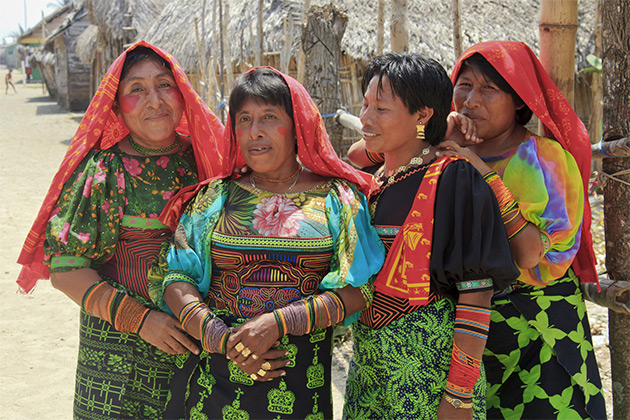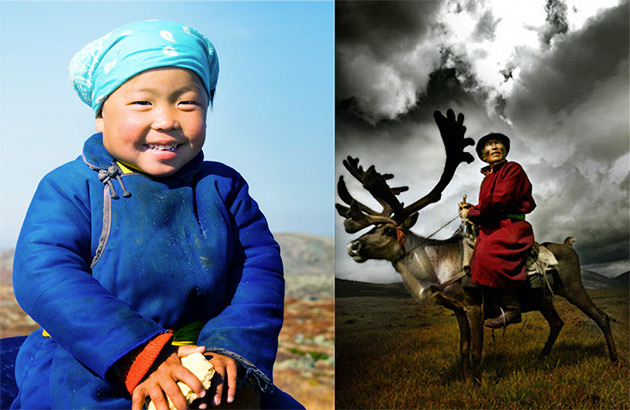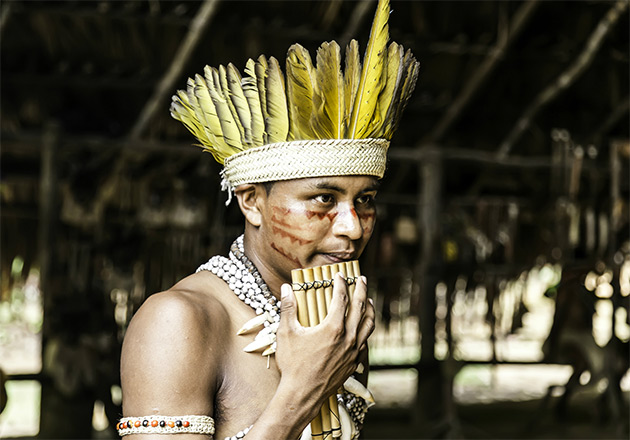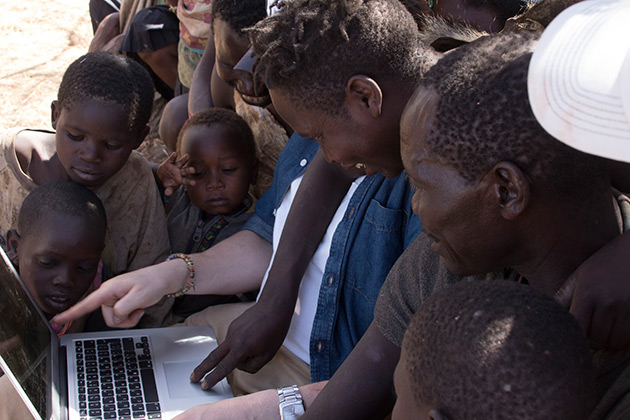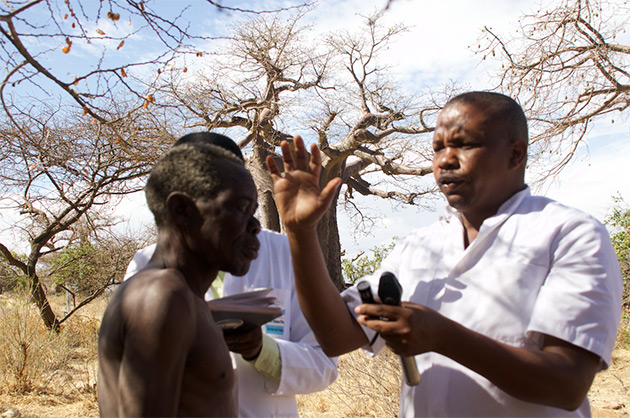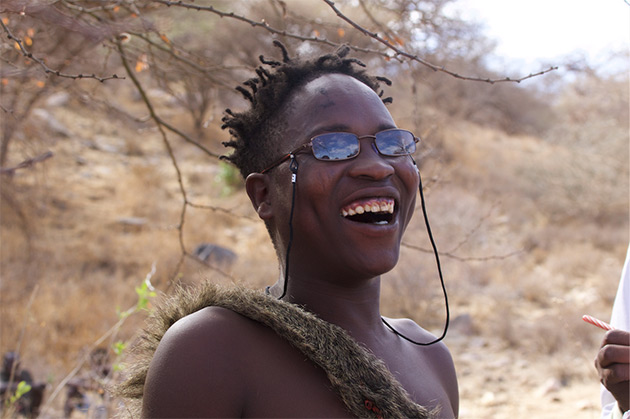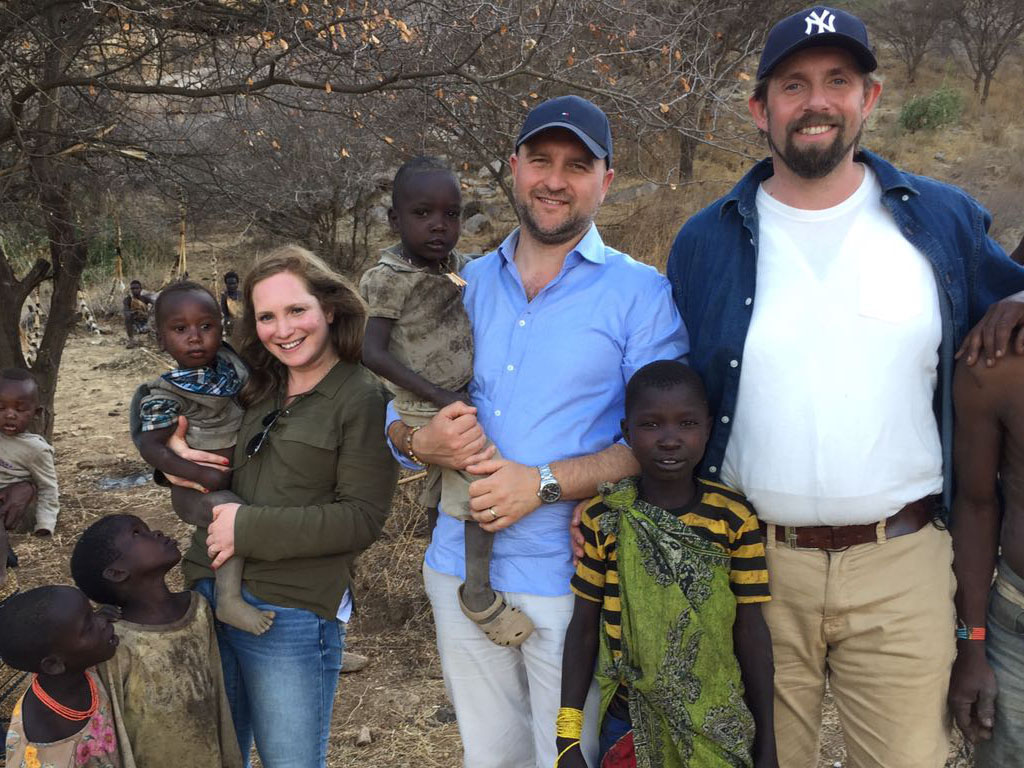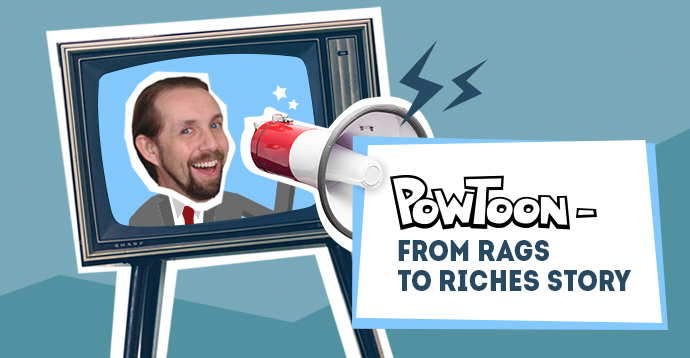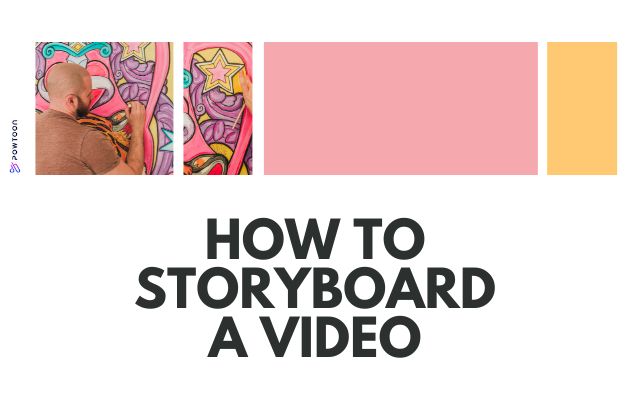
What Happened When Three Tech Nerds Visited a Remote Tanzanian Tribe?
An Awesome Story!
You wanna hear an awesome story?
In our world of micro-attention-spans and constant distraction, we at Powtoon see how the power of cartoons grabs attention every day. But do we really know why animation is so powerful? Are we simply conditioned to love cartoons from childhood through hours of Saturday morning TV, or is it truly a universal language that everyone can instinctively relate to?
That’s the question we were faced with, before the story you’re about to read transpired… How can we determine if animation is truly a universal language?
The breakthrough came when one of the Powtoon Scientists suggested:
“If we can find people who didn’t grow up watching cartoons, then maybe we’re on the right track. Let’s see what happens when someone sees cartoons for the first time.”
But where – in this day and age – can you find a person who didn’t grow up with Mickey Mouse or Bugs Bunny?
An image of the deepest, darkest rainforest springs to mind, a monk perched on a rock in the mountains of the Himalayas, a rice farmer in the farthest provinces of China. Surely there was someone out there who had never been exposed to cartoons.
What we didn’t know was that we were about to embark on a journey that would bring us face-to-face with fascinating people – people who would have a truly significant impact on our lives.
As I write this post, I wear a bracelet that serves to remind me about the importance of gratitude — a lesson that I learned on our journey.
Whom to Visit?
It was a pretty bold and crazy idea. But once we had the notion, it just snowballed from there. We started looking for people, cultures or tribes who live their lives without modern technology.
The options were not vast — there just aren’t that many people left who are completely unaffected by today’s culture…
These were the choices found:
The Kuna of Panama
There were the Kuna people in Panama. The Kuna indians are a strongly-knit tribal society living on a chain of islands called San Blas Archipelago. They still live in much the same manner as their ancestors. The Kuna language (until recently, unwritten) is spoken throughout the community, however, Spanish is fast becoming the second language.
The Inughuit of Greenland
The Inughuit are the northernmost, and most remote group of Inuit. They are also the world’s northernmost people, living closer to the North Pole than any other group. They live far above the arctic circle in Greenland.
The Dukha of Mongolia
The Dukha people have developed a unique relationship with neighboring reindeer. They use them as a means of transportation over the treacherous terrain they call home.
The Ikpeng of Brazil
The Ikpeng are an indigenous people of Brazil who live in the Xingu indigenous park. They live near the upper Xingu river. In 2010, their population numbered only 459.
A Side Story — The Deciding Factor
We saw the options before us, but making the decision seemed impossible.
As we were going through this dizzying process of identifying a tribe to visit, I went to see my physician, Dr. Netter, to ask about medical preparations for the journey.
I mentioned that one of the potential places to visit was Tanzania, and he began to gush about how that was one of his favorite places on earth. He had been there four times, and told me that on his trip in 2008, he had saved the life of a child… He showed me these photos; I was simply blown away…
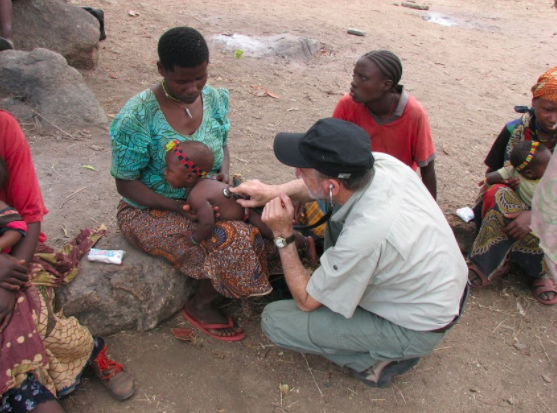
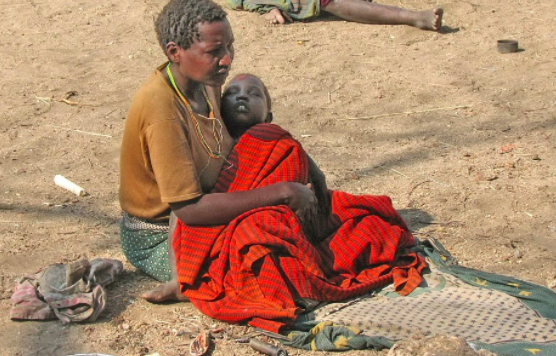
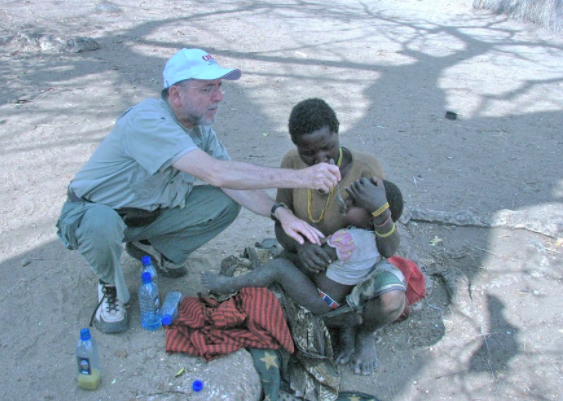
He told me that, in his honor, the mother called the child “DOCTOR.”
That was it. How could I ignore this personal connection? At that point, I made the decision to go to Tanzania — possibly even find “DOCTOR.” All I knew was that he was from the Hadzabe, or the Hadza Tribe.
The Hadzabe
We had discovered the Hadza Tribe in our research, and were considering visiting them. Now we had the motivation to do so.
The Hadzabe are a nomadic people. They are one of the last hunter-gatherer tribes in the world. You may have heard about them because they have a distinctive language that uses these unusual clicking sounds. They live completely separate from society and technology, with no electricity or running water. They live only from the land and from barter with other tribes.
The Hadzabe’s staple foods are berries, Baobab fruit, corn and animals hunted with spears and a bow and arrow. They move from place to place, only staying in a location while they are able to collect fruit and hunt for animals in the area. They have almost no interaction with the modern world, and are reluctant to let outsiders in.
Simply put, they live like their ancestors have for tens of thousand of years. Their number has dwindled from 8,000 people, ten years ago, to less than 700 today. I’ll talk about the reasons for the massive decline in their numbers a little later (it’s quite heartbreaking).

The Crack Team
We had to assemble a crack team of brave Powtoon adventurers for this journey, and there was no way I was going to go without our rain maker Danny (my co-founder and our COO). After all, there could be an unforeseen situation, and Danny can handle any situation – no matter how unexpected.
We also needed Talia (our Marketing Awesomeness) for inspiration, and to make sure that we didn’t miss anything important. Not only did we want to test our theory that cartoons can bring even the most distant of cultures together, but we also wanted to bring a spark of awesomeness with us. She kept us on track on our journey through the desert and the Tanzanian bush.
So the three of us set off…
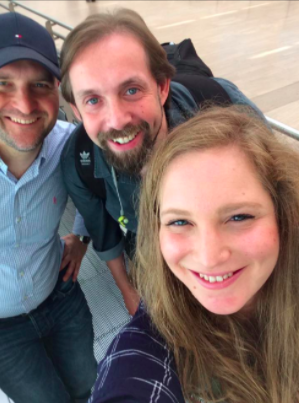
The Journey
We arrived at Kilimanjaro International Airport, and were greeted by Samson, our guide.
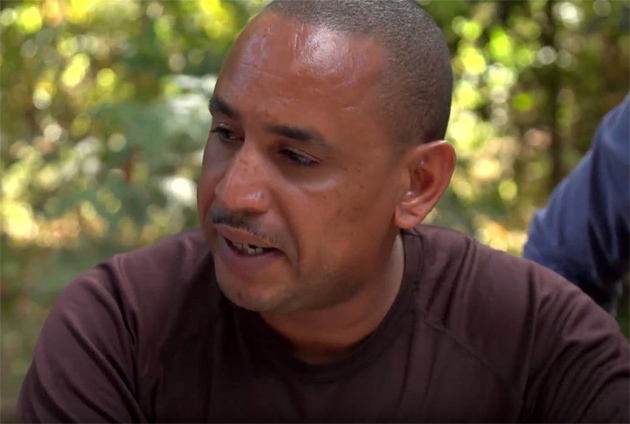
Our first question was about the way to the Hadzabe.
He answered that the Hadza are an indigenous ethnic group in north-central Tanzania, living around Lake Eyasi in the central rift valley and the neighboring Serengeti plateau. Because they are a nomadic people, i.e. they travel around, we could not be sure of their exact location.
The closest place they could be was in the NgoroNgoro region, one day’s drive away?
It was there that we met Mustafa.
Meeting Mustafa
Mustafa, a friend of Samson’s, is a member of the Iraku tribe. He grew up in a village a couple miles away from the Hadza area. As a child, he used to herd his family’s cattle in a spot where the Hadza children played, and so he spent much time with them, occasionally staying with them in their encampments.
He developed a fascination with the Hadzabe, and when he grew up, he went to study anthropology at Dar es Salaam University. There, he focussed his research on Hadza culture.
He lived with them for years, studying their customs and lifestyle, and was now one of only a handful of outsiders whom they accepted and who had mastered their language.
We met Mustafa in the middle of nowhere.
After some time we encountered a herdsman on the side of the trail. Mustafa approached him. This is when we got excited, we assumed it was someone from the Hadzabe. However, Mustafa identified him as Iraku (same tribe as his) based on his clothing. The Iraku man explained that the Hadza tribe left for the mountains a few days ago.
Mustafa pointed to the mountains in the distance and said that that’s where we’ll find the Hadzabe. So we set off toward the mountains.
Seeking Permission to Visit the Hadza Tribe
Mustafa directed us not to leave the vehicle until he received approval from the chief to approach. So we sat and waited.
Finally, Mustafa came back, and said that the Hadza family were willing to meet us.
We approached. In front of us was a group of men sitting below a tree for shade. Just beyond them we saw a group of women playing with their children. A few meters away there was a group of kids, ranging in age from five to ten years old, playing in their own group.
The tribe members greeted us warmly with the Hadza greeting Mu-X-anna.
First Encounter
HanXa, the chief, asked us to sit down and join him under the tree. As soon as he saw me, he remarked on my beard and told me that he wasn’t able to grow such a big one – his just came out as single strands.
He then started poking?fun at us, saying that we looked “soft.”
-Soft? Me?!
Mustafa translated for us, “He says, ‘They cannot chase even a baboon or a monkey.'”
In a fit of laughter, HanXa and the tribe told me that I would run a million miles if I just heard a baboon sneering from 30 feet away.
Long story short – we bonded!!! In fact, we started to develop a real affection for each other almost instantly.
After some time, Mustafa told us that the Hadza were as fascinated by us as we were by them, and as the day progressed, we exchanged many stories about our respective cultures. We asked about their everyday life, and they showed us how they make fire and taught us to shoot a bow and arrow.
We saw three Hadza hunters returning from the hunt. They had left the evening before, and were now returning with a rich bounty.
They had hunted in an area called X-okkakwa. A feast was planned for that evening and we were invited!
Hadza Art & Powtoon Art
I was curious about how the Hadzabe transmitted their folklore and traditions from one generation to the next. Xande offered to show me what they draw to teach the next generation about which animals to hunt and how. They also shared songs that transmit, among other things, how to proceed with an animal once it has been caught.
We walked for around half a mile to a cave where he had expected to find their drawings, but it turns out that wind erosion and possibly even the rain had rendered them unreadable. I asked Xande to show me the symbols that had been drawn there, and he started drawing in the sand, showing me their depiction of a coyote with his head hanging low, a deer, a zebra and a baboon.
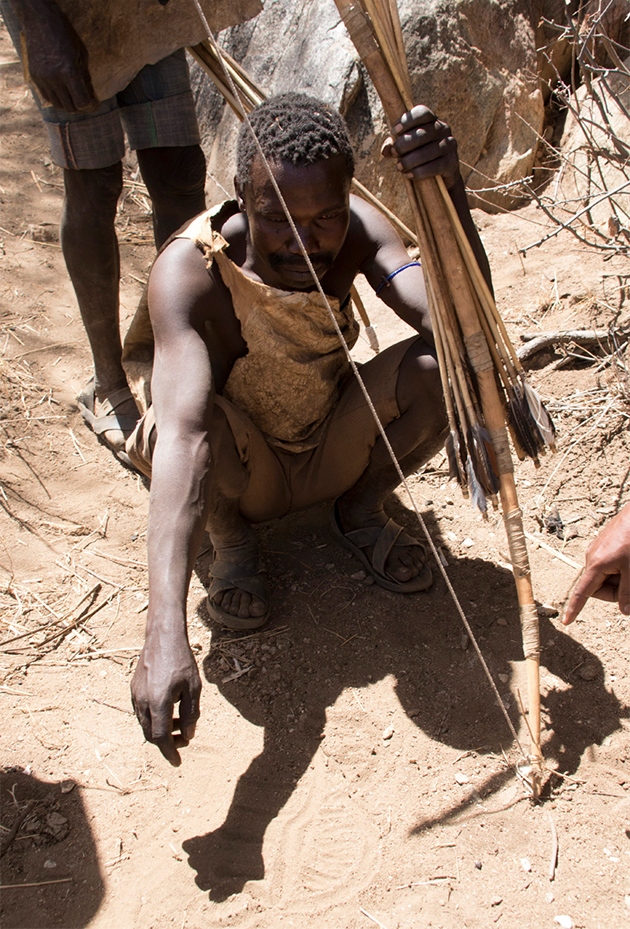
It was an insight into an ancient culture.
Xande was asking many questions about our culture and our drawings.
He wanted me to draw our symbols on the ground and I explained that we transmit our traditions in another way. He wanted to know more and asked me to show him.
With Mustafa’s help we asked the chief if he would allow us to use a computer to show our art. We had piqued his interest. He gave us permission to continue.
From the first moment we opened Powtoon, and they saw cartoons for the first time, the entire tribe was in fits of laughter. It turned out that I was now their designated entertainer and stand up comedian!!!
I made a Powtoon about a Hadza man making fire in the middle of the screen. HanXa pointed out that the fire was burning the man’s legs. In response, I made the fire huge! This was met with raucous laughter from everyone.
We were LITERALLY rolling on the floor laughing. The guys were cracking up, and the children wanted to know how they could get inside the screen.
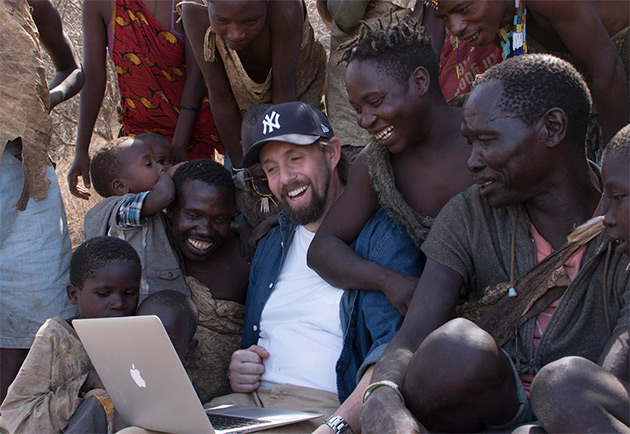
The connection was instantaneous. The laughter, totally infectious. Even though these Hadza did not grow up with Saturday morning cartoons — they immediately connected to this form of art.
After making another Powtoon about the Hadza “coming of age ritual,” Akko, one of the younger members of the tribe, wanted to try it out for himself.
He had seen me use the touchpad to move the mouse on the screen. The gentleness with which he manipulated the touchpad on my Macbook was extraordinary. He was adding assets to the stage, and created a scene where a Hadza girl is picking berries, and a hunter shoots arrows at a target. In the final scene, Hadza children are waving goodbye to us.
We were way beyond the scope of our mission. We only really wanted to see if cartoons would resonate with people who didn’t grow up with them. But this was truly incredible! Forget about watching animation, here was someone who had never seen a computer in his life, creating a Powtoon within minutes.
Our time together with the Hadzabe was truly unforgettable. It’s difficult to put into words how humbled we felt by their warmth and hospitality.
Offering Medical Assistance
Mustafa had previously explained to us that many Hadza have sensitive eyes due to the dust and lack of clean water.
We had asked local eye doctors to join us, in the hope that we could offer some help…
We asked Mustafa to request from the chief on our behalf if we could bring doctors to treat them.
His answer was that requesting this from the chief was futile, since Mustafa had never seen doctors there and knew that the Hadzabe didn’t normally allow outsiders — and especially medics — into their midst. But we were hoping for the best. He asked, and to his surprise, the chief allowed our request.
When the doctors arrived, many Hadza scattered. Seeing their reticence, the chief came forward and said, “First they will try on me, and if I see it’s safe, I will let them try on the others.” (Now that’s a leader for you!)
Slowly, individual tribe members allowed the doctors to treat them too. When the doctors examined Akko, they noticed that he had some scarring and a damaged cornea. He had scratched his cornea on a branch on one of his hunting trips and was now unable to see well, especially in daylight.
Within minutes, the doctors had treated him, prescribed glasses and ointments, and Akko’s face lit up. “I can see! I can see! I’m going to be the best hunter that ever lived!!” — Mustafa translated for us.
I remembered my conversation with my own doctor. I was so grateful we could contribute a little, in a way that these amazing people wanted to be helped.
After hearing the enthusiasm, the rest of the tribe members slowly approached and let the doctors treat them. The doctors spent hours giving individual treatment to anyone who sought it. By the end of the day, you could see many Hadza walking around with glasses and eye medicine.
A Universal Language
We set out to prove that animation is a universal language, and yes, that mission was accomplished. But something more substantial came from this experience.
We learned that no matter how far apart people are in geography, in beliefs, in culture, that we can always come together with the power of an open mind and laughter. Without that human connection, what else is there?
We will not forget the Hazdabe. With their permission, we have arranged for regular doctor’s visits and have committed to providing food so they can sustain their way of life. Beyond that, we will not forget how we felt together, and how we shared a moment, no matter how small. We will always remember the power of speaking to one another through the universal language of art and animation.
Post Script: Some Sobering Thoughts
You might be wondering if we ever met DOCTOR, the child Dr. Netter helped to cure in 2008. Well, the answer is not that easy. We found three children named Doctor. They had been named after the young man we hoped to meet. He had sadly passed away a couple of years prior and the Hadza have a tradition to name children after a departed soul within three months of his life.
You see, as idyllic as the Hadza existence may appear to an outsider, there are significant challenges.
In the last ten years, the Hadzabe population has declined from 8,000 to less than 700.
The difficulty doctors have reaching the Hadza contributes to this decline. Infant mortality is high, and what might be a small problem can quickly become life threatening.
Of course, the Hadzabe (and many other indigenous peoples) need to be assisted in the way that works best for them. Heavy-handed moves in the past to force a settled lifestyle, or to provide state assistance have often done far more harm than good.
We have suggested our help, and are in close contact with Mustafa to provide any care they need without hurting their traditional lifestyle.
You can help too! The Nature Conservancy works to preserve the Hadza lands and their way of life.
Support The Nature Conservancy’s Northern Tanzania Project
More Images
More Videos
A day in the life
Eye doctors visit the Hadzabe
Full video
Special Thanks
First and foremost, to the Hadzabe, for their warm hospitality and life-changing experience.
We are also grateful to: Dr. Thomas P. Baboo, Dr. Samuel Wineshah, Samson Gonsalves, Mustafa Ahmed Elmi, Shlomo Carmel, Athumani Nuombwe, Paz Yeffet, Guy Michaeli, Naftali Elbaz, Amir Shmueli, Kobi Hoffmann, Nati Yehezkel, Ifat Cohen and Sefi Shaked.
And to YOU — our amazing Powtoon tribe — for accompanying us on this awesome journey.
Ilya Spitalnik
Latest posts by Ilya Spitalnik (see all)
- 5 Best Tools to Make Animation in 2023 - February 6, 2023
- The Biggest Challenge of Running a Company Remotely — a Founder’s Perspective - May 7, 2020
- Powtoon 2016 Year-in-Review: New Features & 2017 Spoilers… - January 1, 2017
- The Saddest Google Alert I’ve Ever Gotten… - December 19, 2016
